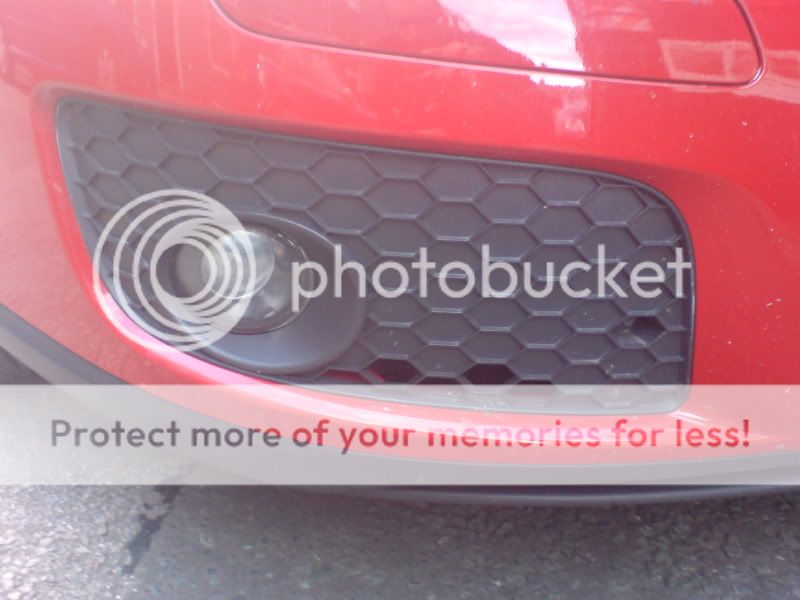I have a very early model that has some of the 'holes' open. Whats the story with this?
Pics please...
As you wish sir ...

Yup, those were fitted on the very early models, but got superceeded shortly after (don't ask me when, because I don't know exactly), and even if you got the part number off the reverse, you wouldn't be able to order them.
But the simple reason for them being changed to solid 'filled in' grilles is simply down to aerodynamics, and specifically, getting an adequate flow of air to the front brake cooling ducts. Look directly below where those holes are, and that is where the lower 'lip' ends. The purpose of that lower lip is to 'collect' air from a wide frontal area, and then 'spill' it out directly above the brake ducts. Look carefully where the lip ends, particuarly the 'angle' on the black part of the lower front bumper, and you will see that it will cause the air to 'turn' underneath the bumper, rather than flowing upwards over the top or round the sides. Now get on your hands and knees (ooo errr), and look underneath that area, and that is exactly where the 'naca' ducts are for the brakes.
But if you believe others, they would say I am talking BS. But did anyone see 'Bang Goes the Theory' last week? Watch it on the iPlayer, and they specifically had a wind tunnel test on the importance of getting air to the front brakes. They also showed the brakes on fire - again, sommat I have been 'belittled' over by a 'few' on this forum. But brakes CAN catch fire - my last Audi S4 regularly had self combusting brakes, and this was caught on video on a track day. I've had RS6s with brakes on fire, Vectras, Astras and Chavaliers with firey brakes. And when I have a mooch around Snetterton, I regularly see road cars with fire-damaged front and REAR brakes.